Chinnakallar Birding
Its always fun to do birding after rain as most of the birds get wet and sit in a branch to dry off their feathers instead of their usual restlessness behavior. The birds really enjoy the sun after rain and they start singing. Chinnakallar birding happened only when the rain gave short breaks. As we were birding for more than 7 years we usually don’t mind the common birds like bulbuls, shikra, myna, kingfisher etc. But this time as new birder Shanmuga Priyadharsini joined our team, and she was eager in seeing all the birds that came infront of her. So unknowingly she gave us many lifers as she keenly watched all the birds. When we saw the jacaranda tree in full bloom we knew the vernal hanging parrots should be in there as they love drinking nectar from them. Vinod spotted one of the parrots pecking the flower, then we saw few others at the other end of the tree. Vinod and myself love this bird, as they were in the tree next to the bungalow itself we watched them very closely.
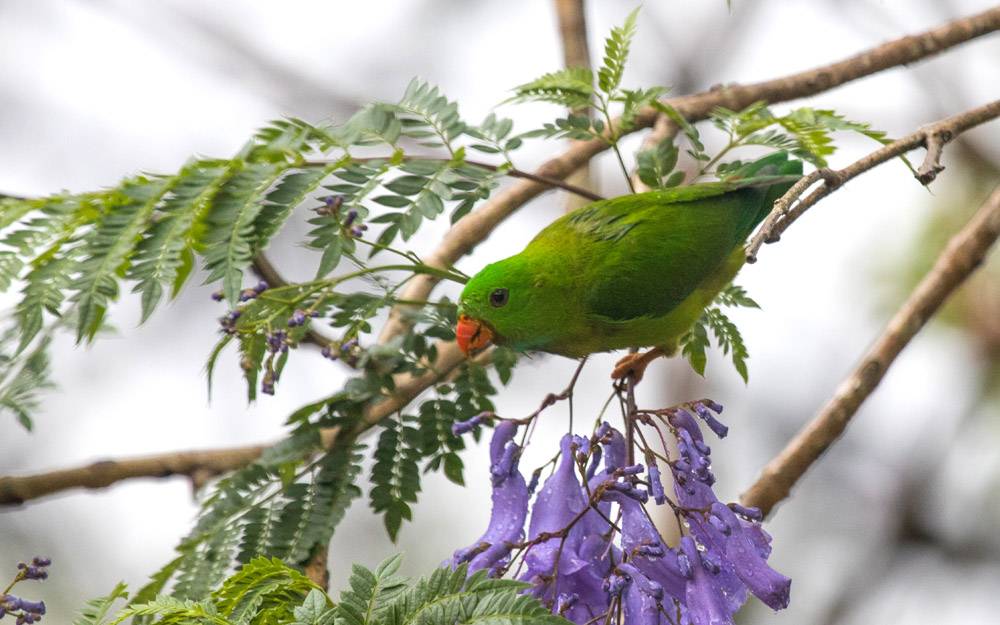
The Jacaranda Tree is a large shade tree that lights up the landscape with large, vibrant purple blossoms. These purple blossoms are a major attraction to the vernal hanging parrot which feeds on the nectar of these flowers.
No jungle trip in Western ghats was complete without hearing Malabar Whistling Thrush. We saw them in all the places we roamed around, but hearing their song early morning is never boring. Priya woke up hearing the thrush singing and she couldn’t believe the singer was a bird and not human. Painted bush quail was one of the birds in our wish list. We were all casually drinking tea when Priya showed us the family of Painted bush quails shyly walking in the tea plantations, saying ” See a family of hen “. We three immediately rushed to get our cameras and then there were just clicking sounds. Priya was looking stunned wondering what was all these fuss about!! We later explained her, how all the birders and photographers spend days to see this bird.
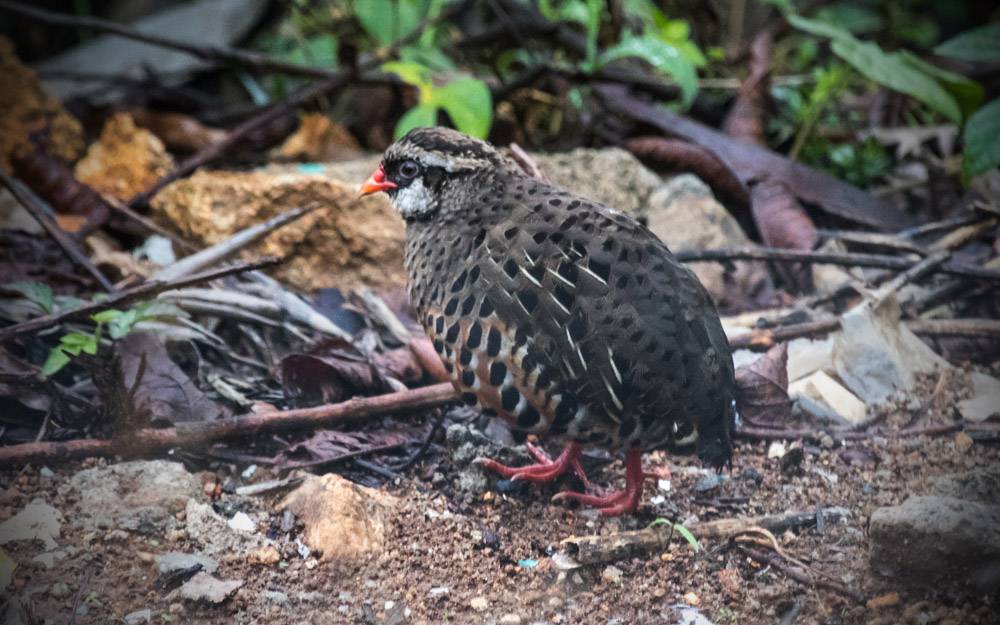
The painted bush quail is a very shy bird that runs around beneath the bushes. Even for regular birders it is not a usual sight.
Vinod’s wish in this birding trip was to see Indian Pitta. Though we have seen the bird few times, we didn’t get a chance to see the bird in a good light to appreciate its vibrant colors. Its a ground bird, so its tough to see them clearly in dense bushes. We were so lucky in this trip, we saw this bird near the forest bungalow where we stayed. Vinod couldn’t believe his eyes that he saw Indian Pitta from the balcony.
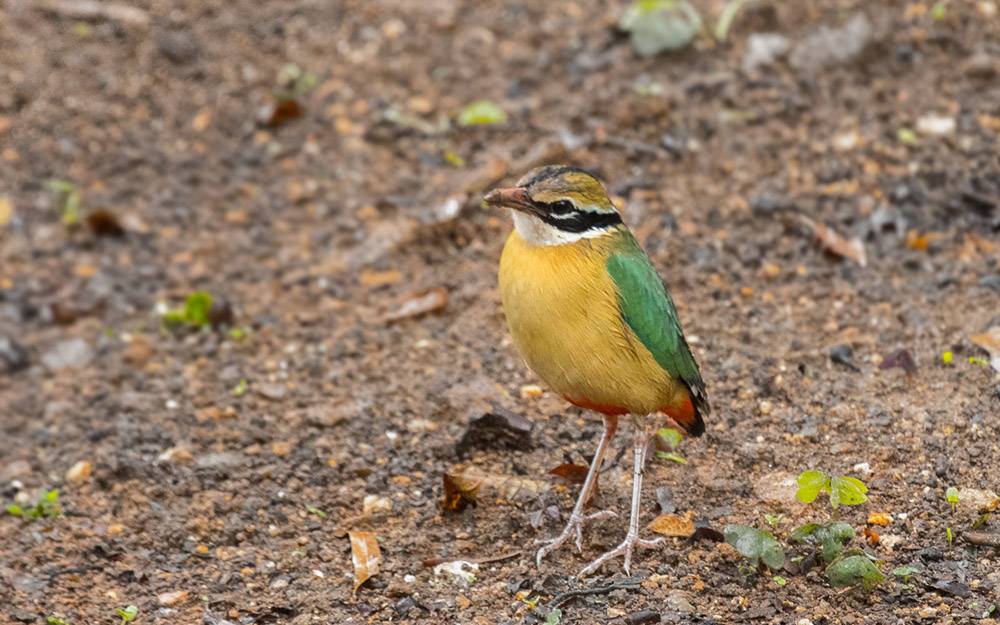
The Indian Pitta is also another shy bird which rarely ventures out of the bushes.
We went for small night drive as we were warned by the locals not to roam around in night because of the wild animals activities. We were searching for owls,frogs. There were no frogs sound even after heavy rain. A spotted owlet flew away when we stopped the vehicle to listen for any other sounds. When my eyes finally got adjusted to the darkness I spotted Indian nightjar sitting on a pipeline matching its color exactly.
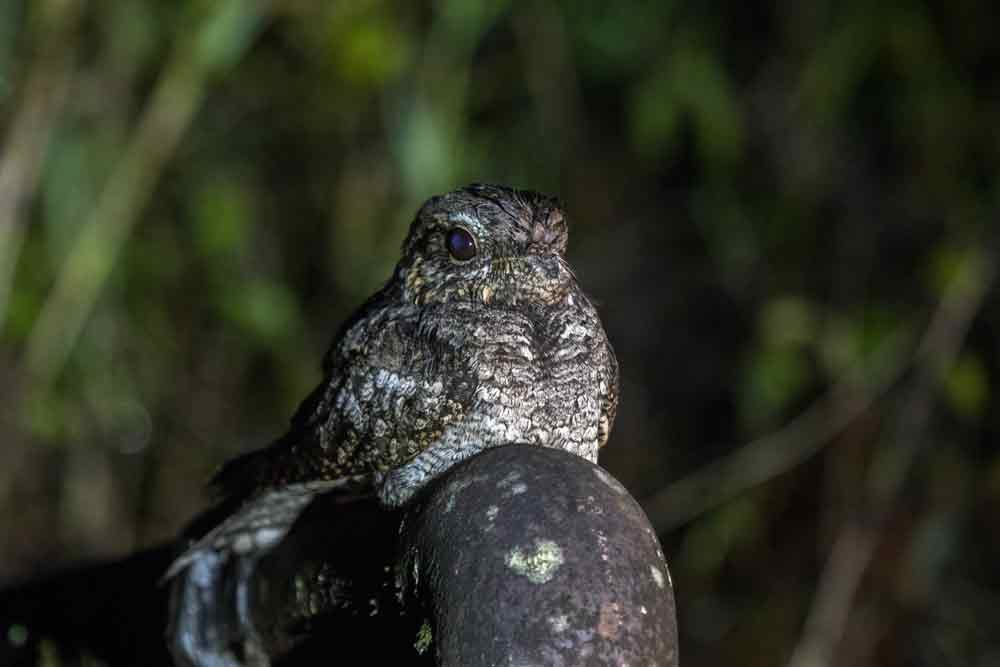
Nightjars are hunters of insects during the night and could be spotted along the road. During the day they can hide in plain sight by sitting on branches motionless. Their color provides a perfect resemblance of a bark and they are really hard to spot during the day.
We got down cautiously to see the bird closer. It didn’t move at all, looked like a carved stone.
When we hear the word “Camouflage” everyone thinks about Chameleon, but we birders think about nightjar!
Asian Brown Flycatcher is a common flycatcher which you can see everywhere. But in this trip one Asian Brown Flycatcher behaved very friendly with us. Usually we follow the birds, but this one followed us. To the extent, vinod had to zoom out the lens to take photo of this bird.
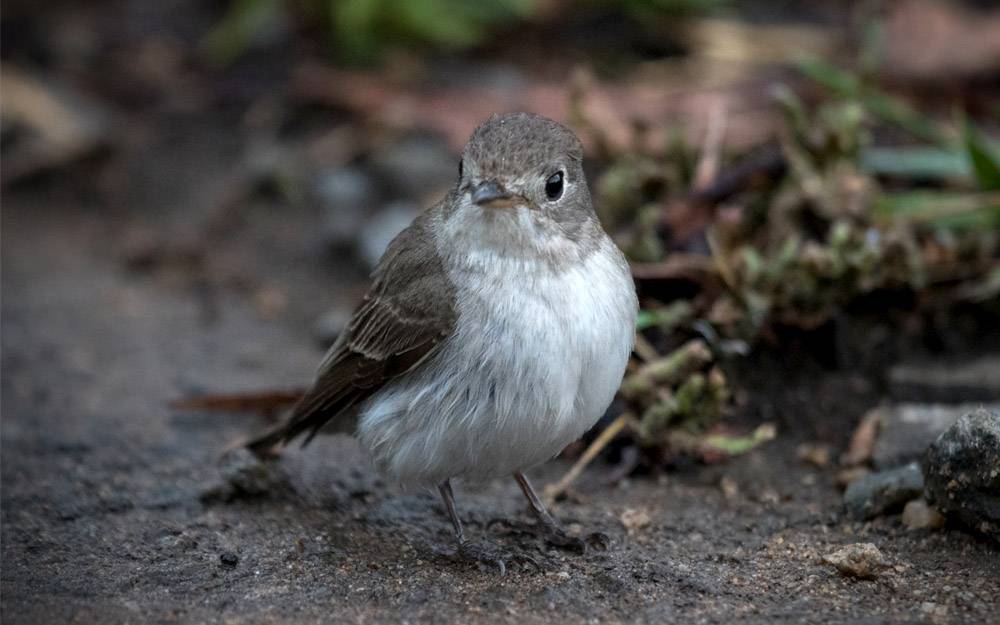
Right from the moment we stepped out of the guest house, the Asian brown flycatcher was our company.
We saw woodpecker pecking the tree, they don’t mind people usually unless you go too close. Another colorful bird that caught our eyes in this trip was Chestnut headed bee-eater. Its an easy to spot bird, but this time we saw them when they were building homes on the mud slopes on a roadside. The flocks were constantly in discussion, mostly about their homes we thought. The golden colors on the birds looked extra attractive in that sunlight.
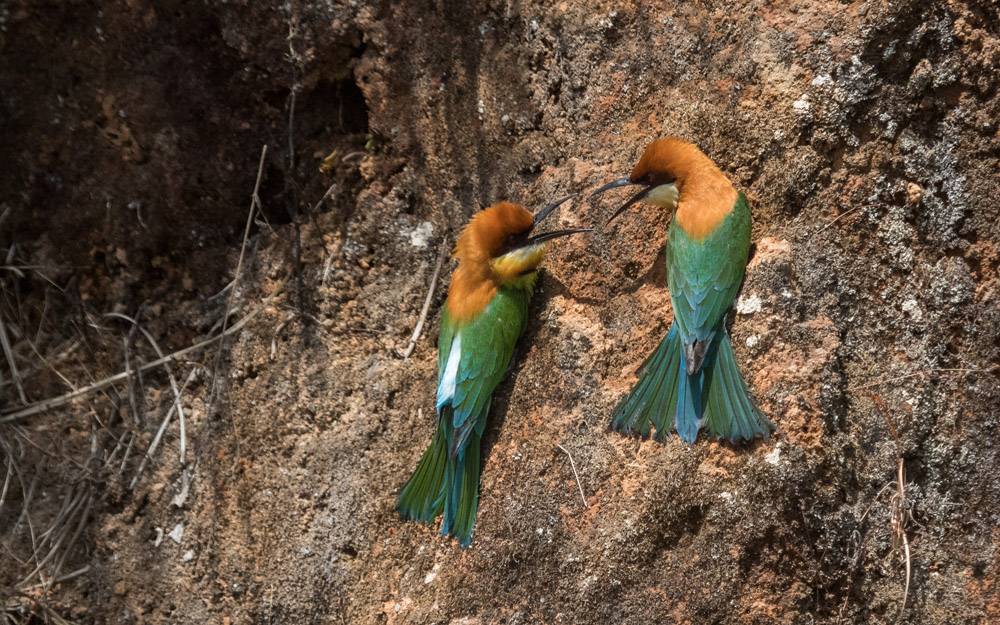
These talkative chestnut headed bee eaters were building nests, which is a simple hole on a mud bank or cliff face. The two were constantly bickering over the hole.
Vinod and Gokul went out with a forest official in the evening and when they came back they were screaming in excitement. They had seen Great Hornbill sitting on a tree at a distant. They shared their memorable experience like how they spotted and how majestic the bird looked even at distance.
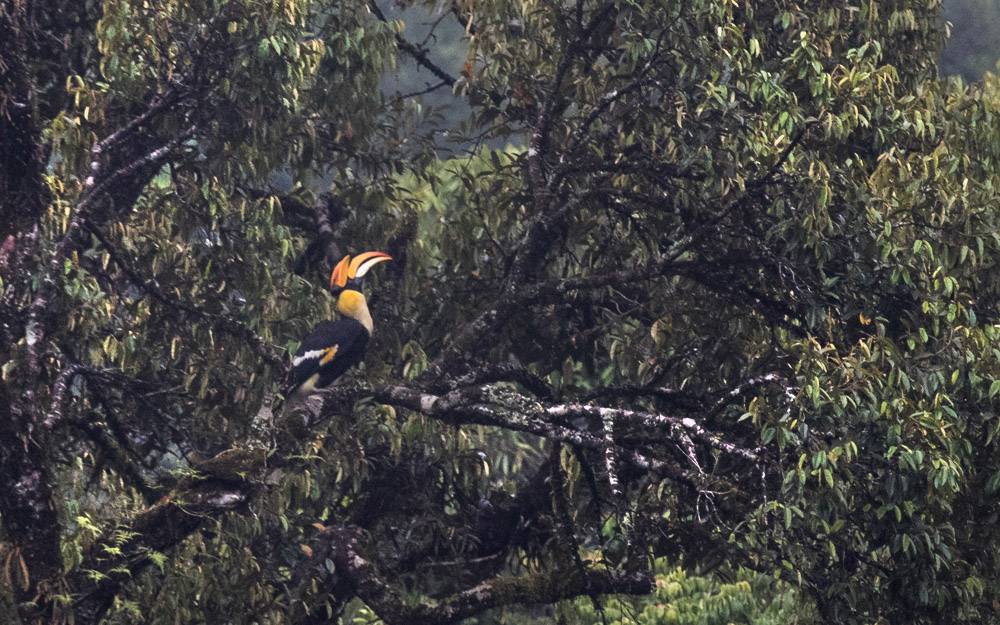
Great Indian Hornbill is one of the largest flight birds of India. Even from a opposite side of a mountain they look huge.
We ladies missed it but the next day on the way to athirampalli falls we also got the opportunity. We got the home location of a Great Hornbill which was on the way to Athirampalli falls. But when we went to that tree house, we were told by the nearby tea shop owner, that the Hornbill family has vacated this home. We were disgruntled and we just continued to drive. Just few minutes after we saw a flycatcher and stopped the car to see the bird. The guys were chasing the bird, while me and Priya were seeing the beautiful trees and the water canal on the roadside. Suddenly we heard a loud wings flapping sound and there they were, father and son/daughter flying just above our head. Vinod was quick enough to capture the moment, while we were all just gaping at the beautiful big bird.
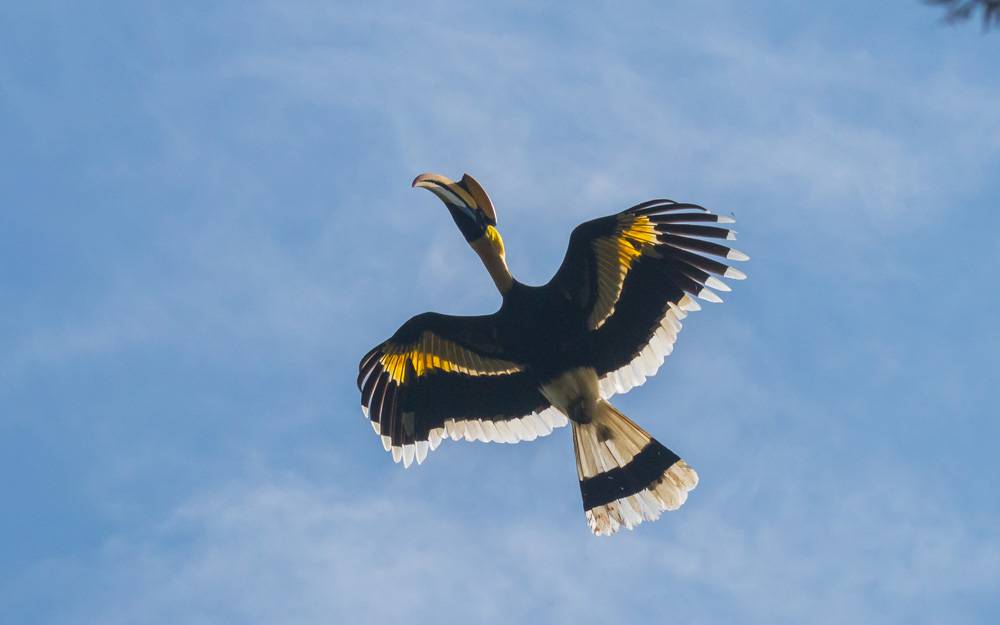
This huge bird generates a helicopter like sound while flying. Infact this is the sound most birders look for , while searching the bird.
When we were driving through the Athirampalli forest area, stopping frequently to see common jungle birds like Racket tailed drongo,Jungle fowl,Paradise flycatcher,Verditer flycatcher. I called Vinod in excitement to stop the car and looked at the bird on the electrical cable. There was the Dollar Bird sitting with its mouth open to avoid dehydration from heat. The Oriental Dollar bird is usually spotted on bare branches in high trees. It was a sweet moment for me as it was a lifer!
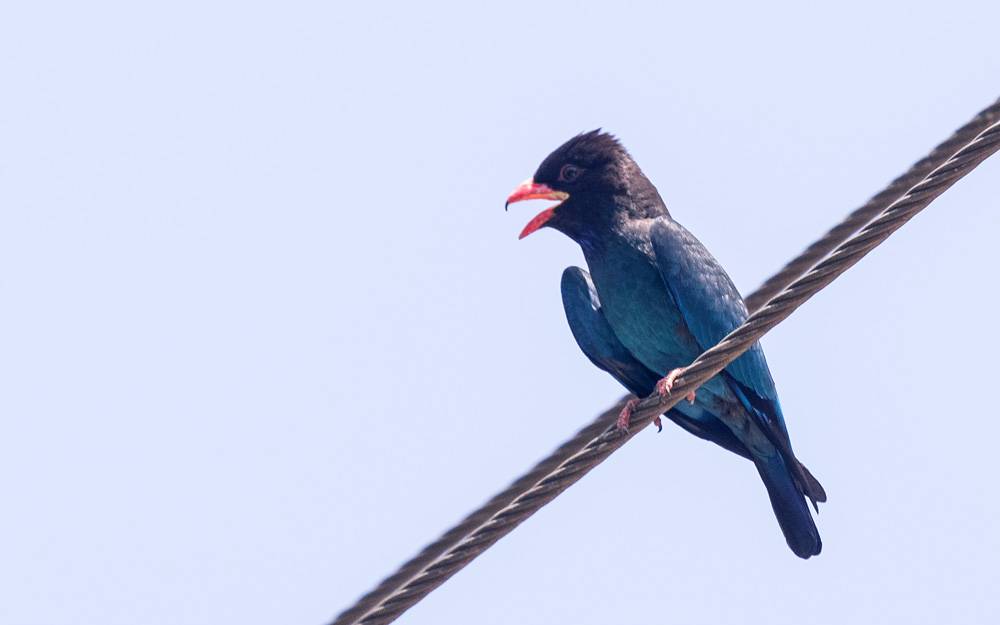
I simply don’t understand the reason for naming the bird as “Dollar Bird”.
At the end of the trip Shanmuga Priyadharsini Dhandapani recited bulbul,hornbill,shikra,babbler,drongo,hill myna,whistling thrush,fairy blue bird,bee-eater,flycatcher,spotted dove,oriole,kingfisher,woodpecker. She was the first one to learn so quickly about the birds among those who have accompanied us in travels so far. We were happy that a new birder was born in this Chinakallar birding trip!
Best time for Birding in Chinnakallar
Chinnakallar always has wonderful weather. So you can visit Chinnakallar anytime of the year but if it is during December-March , you can see numerous migratory birds especially flycatchers.